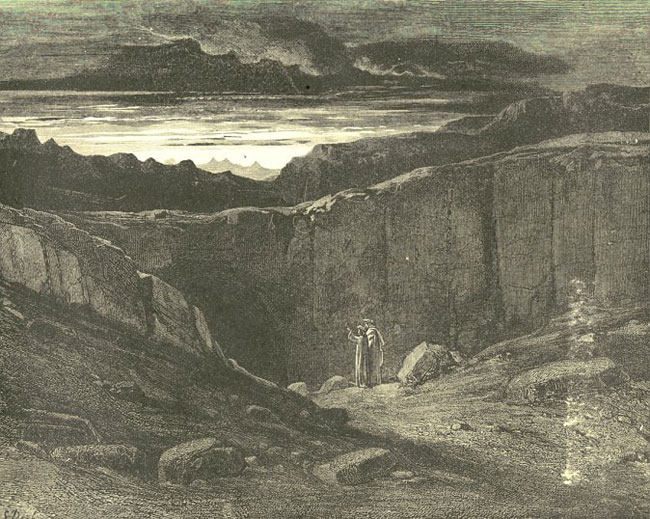Dante is one of history's most acclaimed and well known poets. He is known as the father of the Italian language. He has influenced, both directly and indirectly; consciously and subconsciously, many writers and poets. Not only has the metaphorical story of his journey through the spiritual world attracted world fame, but the styles, techniques, and allegories used in his story. Dante's work is one the most influential and complex literary works of all time: a thick and tightly knit interweave of philosophical ideas and political thought, masterfully crafted at the loom of his own intellect.
One element of Dante's writing that is quite notable and apparent, is his copious use of references to other literary works and mythologies. Throughout the entire story, Dante references numerous texts and stories, using them as preset tools to provide infinite detail to his own work. Among the references used, the Bible and the Aeneid are the two most common. Dante uses the biblical ideologies as obvious inspiration for his own work but also nearly directly quotes from the Scriptures in his work. The Aeneid provides Dante not only with a set of characters to populate his Inferno, but also a preset mythology and pagan set of ideologies. Both of these texts were widely well known in Dante's time (and until now) due to the religious and re-emergence of classical texts.
Dante also uses characters and places from his modern time in medieval Florence (or at least from its recent history) as well as famous associates of the medieval, italian, Church. Dante pulls characters from Florentine history (and present) as example and allegory to the circle of Hell in which he describes. For example, in the second circle of Inferno, Dante places Francesca and Paolo, both of whom were murdered and were hot topics of the late Florentine history. Also, Dante strategically places his enemies in particular places in hell. Pope Boniface VIII was the major contributor to Dante's exilation from Florence, and thus, reserves a special place and mention in the Inferno.
These allegories continue virtually infinitely through the Divine Comedy. It would take thousands of pages of commentary to even cover a fraction of them. Because the story itself is an allegory for our mortal lives and eternity with (or without) God, the allegory is quite expansive. Also, among the story includes allegories relating to the topics of (and not limited to) the meaning of life, morality, the structure of time, space, and the universe, God's love and perfect justice, etc.... To claim a knowledge of them, and how Dante intended them to be read, would be ignorant.
The final element of Dante's work that also shows great literary prowess is his ability to structure his poem. The entire Comedy is divided into a (nearly) perfect three. Each stanza is also structured into terza rima, or three lines. The obvious reference to a holy trinity structure, I think, also implies some degree of perpetuality and cycle. Each time you read three lines, another set of three begins again; each time one's soul travels the path through the spiritual realm, another soul must follow.
The complexities of Dante's work continue to further present themselves more complex each time I review them. Each individual thread of Dante's complex and expansive tapestry are evidently each carefully chosen from an abundance of the world's material. However, the only way to see why he chose each thread and element of his great work is by looking closely to each one as it relates to another.

No comments:
Post a Comment